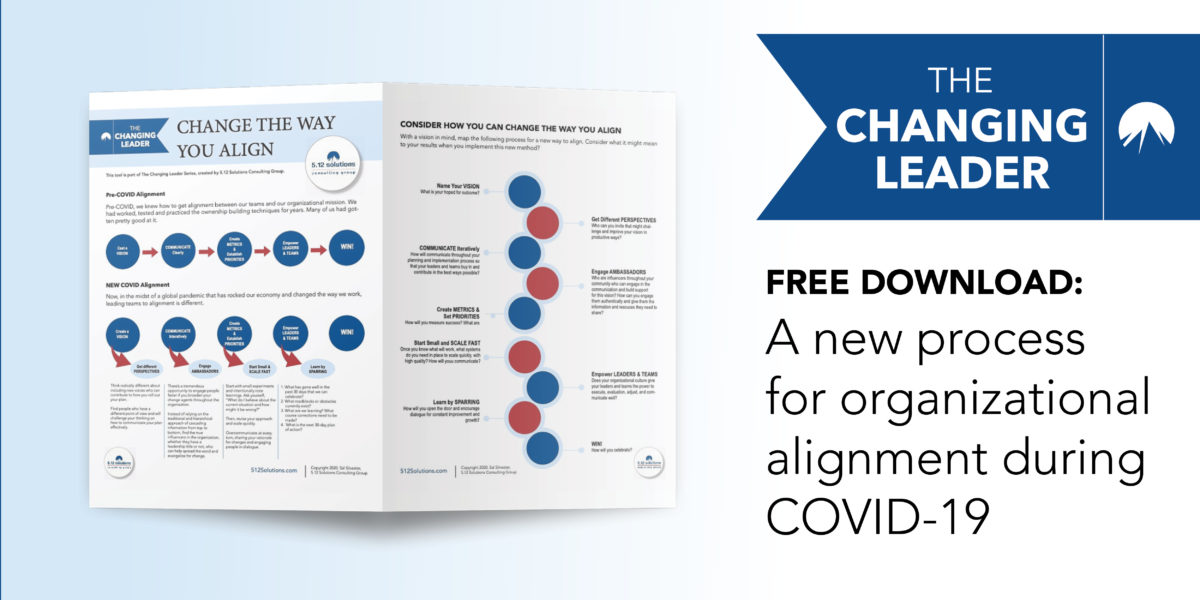I recently started fly fishing, and, judging by the empty shelves at the local fishing outfitter, I’m guessing I’m not alone.
It’s been a really interesting experience learning something completely foreign. When I first started, I was super excited but as I began to develop some skills, I realized how little I actually knew.
And then I became overwhelmed.
Maybe it’s not unlike what many are experiencing in the workplace today. In order to survive the pandemic, most organizations have had to quickly change their business models. People have had to learn new skills, develop new capacities and implement new technologies.
Any time we change direction or pursue a new strategy, in the earliest phases of that important work, it’s usually a small group of people and leaders who’ve spent the most time engaging, debating and processing any given change. Once they have clarity on their next steps, they are ready to execute.
The problem is that they often miss a critical step in between vision and execution.
That step is alignment.
Said differently, others in the organization haven’t yet had the opportunity to engage, debate and process and, as a result (1) don’t have clarity around the new direction and (2) haven’t yet bought into it.
The world of COVID makes it even more complicated, as the process of moving from vision to alignment to execution needs to happen faster than ever.
Over the past two months, we’ve focused on a theme we call the “Changing Leader.” We’ve explored how leaders need to change their thinking to be successful in this dynamic new world. We’ve also explored how leaders need to connect differently.
Here are a few strategies on how leaders need to align differently.
Communicate Iteratively
Let people know you are working on a new plan sooner. You don’t have to wait until it’s all buttoned up to roll it out.
Plant the seed, and then very clearly share when you will give people the next update.
Then engage your employees in conversation – let them ask questions, share what you know and don’t know; and be as transparent as possible.
Communicating an update will provide clarity. Giving people a chance to weigh in will generate buy-in.
Get a Different Perspective
Think radically different about including new voices who can contribute to how you roll out your plan.
For example, invite someone to give feedback who doesn’t have any context about the project. Or maybe someone who is younger and less experienced, from another segment of the business or even from outside the organization.
Find people who have a different point of view and will challenge your thinking on how to communicate your plan effectively.
Engage Ambassadors
If you think of your employee base as a network, or interconnected web of relationships, you’ll quickly realize that there’s a tremendous opportunity to engage people faster if you broaden your change agents throughout the organization.
Instead of relying on the traditional and hierarchical approach of cascading information from top to bottom, find the true influencers in the organization, whether they have a leadership title or not, who can help spread the word and evangelize for change.
Start Small and Scale Quickly
The experimentation mindset that we explored in an earlier post can also apply to how you align your organization in an unpredictable world.
Start with small experiments and intentionally note learnings. Ask yourself, “What do I believe about the current situation and how might it be wrong?”
Then, revise your approach and scale quickly.
Keep people updated at each step of the process – have your ambassadors continue to evangelize revised approaches; and overcommunicate at every turn, sharing your rationale for changes and engaging people in dialogue.
Learn by SPARring
More than ever, it’s critical that leaders revisit their plans. We call this the Strategic Plan Accountability Review or SPAR, for short. Even the metaphor for sparring is terrific as it naturally inspires people to engage and debate the best course of action.
The SPAR process consists of four simple questions that should be reflected upon on a monthly basis:
- What has gone well in the past 30 days that we can celebrate?
- What roadblocks or obstacles currently exist?
- What are we learning? What course corrections need to be made?
- What is the next 30-day plan of action?
Get Your Change The Way You Align Toolkit
I caught my first smallmouth bass this summer on Sandpoint Lake in Idaho – my first catch on a fly rod. I’m still waiting to repeat the same in a river. I also know that if I continue to evolve my thinking about fly fishing, connect with the right people in the right way, and align my skills, it will come.
I invite you to do the same in the workplace. More than ever, we need leaders who can think differently, connect differently and align differently.
Check out our Change the Way You Align worksheets below. This practical framework will help you reset how you align so that your organization can emerge from this crisis stronger than ever.

